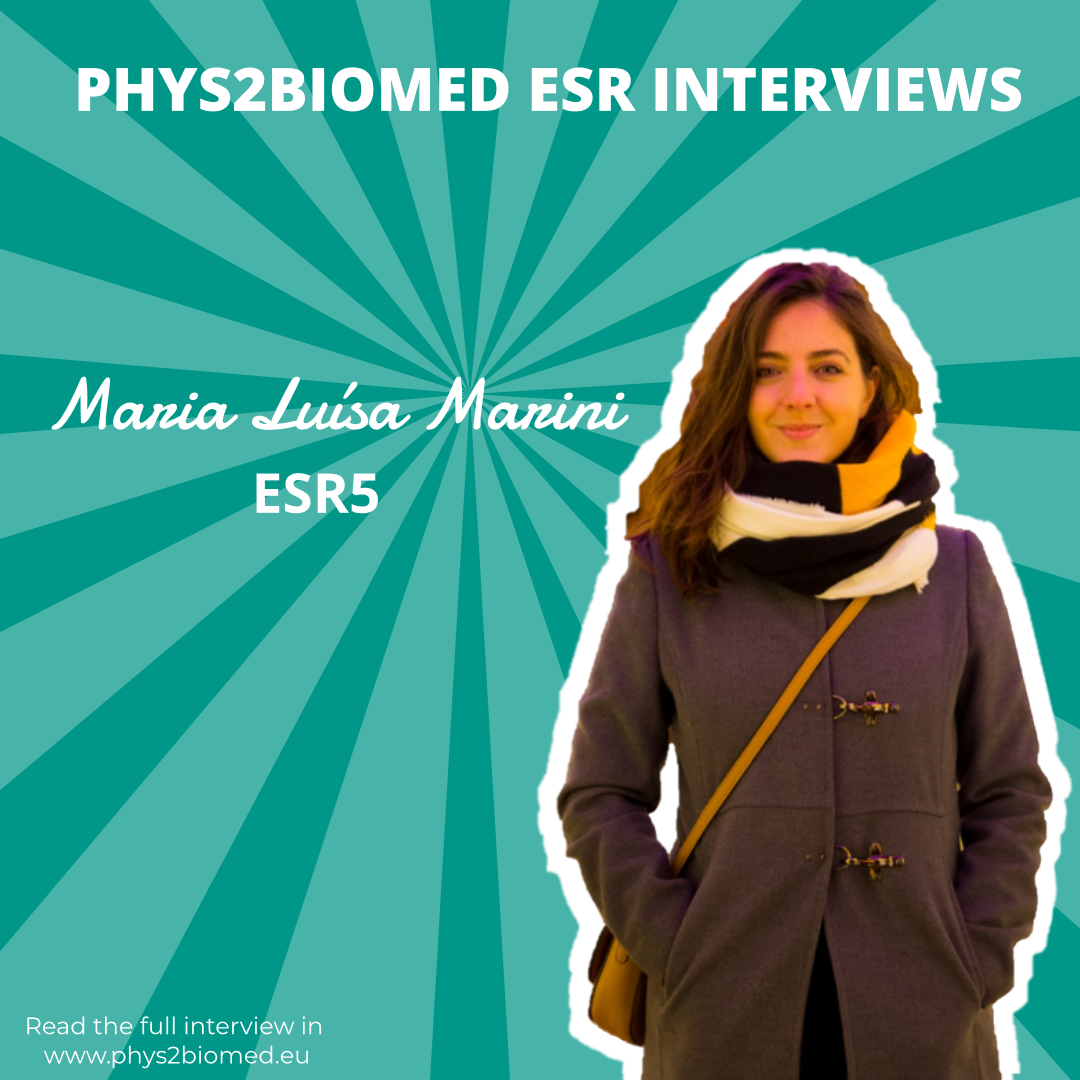ESR5. Maria Luisa Marini
 Short biographic note
Short biographic note
Maria Luisa has always been interested in studying, and possibly creating, something that could change people’s lives.
Therefore, she chose as bachelor degree biomedical engineering, at the Polytechnic University of Turin. Such course led her to discover the field of Lab-on-Chip systems with an elective internship. It was so challenging and interesting the application of such technologies that she undertook the path of the nanotechnologies, where it was possible to develop skills in solid-state physics and the electronic properties of materials, physics and manufacturing process techniques, as well as modelling and applications to MEMS, NEMS, transistors and photonic devices. The most challenging experience came along when the opportunity to work at DTU (Technical University of Denmark), building a prototype of a Gut-on-Chip that could integrate in vivo confluence analyses and diffusion studies. The project consisted in managing from the design to the fabrication and then testing of the prototype, exploiting deep imaging techniques, cell culture techniques and procedures, biology, biochemistry, galvanostatic acquisitions and 3D printing techniques.
Even if Maria Luisa spent almost one year working in a consulting company, the research in life sciences has her curiosity and passion. In the Phys2BioMed project she will develop instrumentation and analysis tools for studying nano-mechanics parameters of cells and tissues.
Project Title
Nano-mechanics response measurements of cells and tissues in cancer
Start date
1st June 2019
Beneficiary
Objectives
Expected results
Planned secondments
Useful links
Linkedin:www.linkedin.com/in/maria-luisa-marini-11021992/
E-mail: marini.marialuisa11@gmail.com
Interview

Question 1: Where are you from and where are you conducting your research now?
Maria Luísa: I am from L'Aquila which is a small city in the middle of Italy. It’s a very peculiar place even though it is still recovering from an earthquake. Right now, I am conducting my research in Lille, north of France.
Question 2: Can you describe your project in one sentence?
Maria Luísa: The study of nanomechanics of cells and tissues for diagnostic purposes.
Question 3: What is your background?
Maria Luísa: My background is biomedical engineering, but I specialized in nanotechnology.
Subquestion: Did you do any internships?
Maria Luísa: Yes, I did one internship in this spinoff of Polytechnic of Turin that is called Chilab. They work mainly with microfabrication, microfluidic devices, electronic devices in general. I basically worked in a clean room, an extremely controlled environment. There I learned of the wonderful world of lab-on-chips and I fell in love with it. This is why I chose to study nanotechnology. Then I did my master thesis on organs-on-chip in DTU, Copenhagen, Denmark.
Question 4: What’s one thing you love about Lille and one thing you don’t like?
Maria Luísa: I think that Lille is lovely, and I really enjoy its streets. It may be obvious, but you feel its history, you feel like this place has really lived. And you feel it in the people too: everybody is super open and willing to create and be active. Something that I don’t like would be all the stairs around the city. They are super narrow and extremely high, so it is very easy to trip and fall.
Question 5: What is the biggest difficulty you are facing within your research right now and how do you plan to overcome it?
Maria Luísa: The biggest difficulty is to be able to detect differences between pathological and healthy tissue while doing measurements. Recognizing what we see during the AFM measurements without staining can be quite a challenge: inflamed tissue, healthy, tumour or ECM. So, one way to overcome this is to correlate to the acquisitions with other techniques: histological data, confocal microscopy or other microscopy techniques, image recognition and artificial intelligence.
Question 6: Why did you choose a research path?
Maria Luísa: I have always been interested in research, but I knew that going from research to industry was more difficult than going the other way around. So, I tried industry first because I needed to see ‘the other side’ and I noticed it wasn’t exactly what I wanted – it was more empirical than theoretical or ideological approach, I guess. I do not regret it, though.
Question 7: What inspires you the most?
Maria Luísa: I feel like technology is something super powerful. Thanks to my past internships I am amazed at how our knowledge can lead to something so huge and life-changing. And I feel like that is also what we are going to achieve with this ITN project: each one of us is studying something that may seem small, but we’re collaborating to make something bigger than us.
Question 8: What do you do on your free time? Also, do you have any goals for your free time?
Maria Luísa: Oh, I have too many! One of my goals is to get better in my singing. I wish to travel more as well. Right now, I am focused on sports, dancing and, most importantly, on getting in touch with people after all this time in lockdown. I would like to learn other languages as well - I want to be a polyglot - that’s the objective.
Question 9: What’s the most interesting thing about you that we wouldn’t learn from your CV alone?
Maria Luísa: How good I am in yoga. (laughs)
Question 10: If you were stranded on a deserted island, what 3 things would you bring and why?
Maria Luísa: My ukulele, which was something amazing to have during the quarantine. A coffee machine that somehow works on an island! And lastly… a friend (laughs).
 Biomechanics in health and disease:
Biomechanics in health and disease: